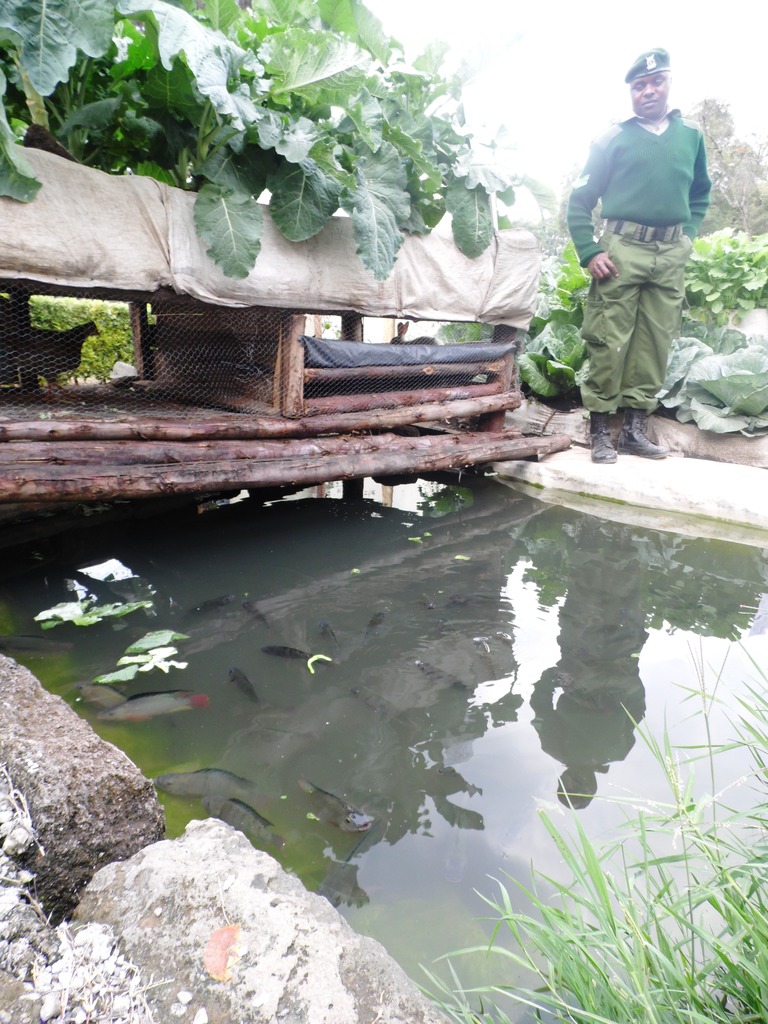Kenya Prisons Service officers recently harvested 50 tilapia fish, with some weighing up to thrice normal pond mass from an integrated 4m by 6m pond supported by waste of two chickens and two rabbits.
Nakuru prisons officer, Jared Mokaya said the February harvest proved that with knowledge, farmers do not need large pieces of land to transform their lives.
“It is a perfect example of using one animal’s waste as food for the other. It is a natural set up of recycling nutrients that posted impressive results in six months,” the officer, who is in charge of the prisons farm in Nakuru said.
On average, tilapia fish from common ponds weigh between 200 grammes and 500 grammes at maturity. But the officer said they were surprised to catch tilapia weighing up to one and half kilos.
Weight multiplication
Half a kilogramme of tilapia can fetch between Sh400 and Sh600, depending on the region.
In that mini farm, the chicken house and that of the rabbits, partitioned, run over part of the fish pond. The other part is left open for sunlight to reach the water to support growth of green matter.
READ ALSO: EU market opens up for Kenyan fish farmers
Integrated nutrient cycle
On top of the rabbit and chicken house is a green farm with about 20 healthy kales. The kales are propagated on soil stacked in one continuous sack.
“Kales are food for the chickens and rabbits. The rabbits and chickens defeacate into the water. The droppings are rich in nitrogen compounds, which support growth of phytoplanktons,” Mokaya said during the 2016 Nakuru Agricultural Society of Kenya Show.
READ ALSO Farmers double yields with fish poultry technology
Food for fish
Phytoplanktons are microscopic microorganisms commonly called algae.
In normal aquaculture, farmers are supposed to apply manure or other forms of fertiliser to support growth of the algae.
READ ALSO: Project seeks to harmonize Africa’s fish trade
Rich oxygen
Planktons are food for fish. They also release oxygen during food synthesis, which is also consumed by the fish.
In fact, scientists believe algae contribute between 50 per cent and 85 per cent of the global oxygen. This means that the fish will never suffocate.
During respiration, the fish release carbon dioxide. The carbon dioxide is used by the algae in photosynthesis.
Extensive feeding
The officer termed the set up as “an extensive feeding”, which they only supported with half a kilo commercial feeds to the fish.
During recycling the nutrient-rich water is used to irrigate the kales.
READ ALSO Tank fish farmers can purify water for reuse with Sh75,500 kit
Preventing predators
Birds, rodents, snakes and other small animals like cats and dogs are the main predators than can be kept at bay by a small eyed wire mesh cover.
READ ALSO: Wooden backyard pond keeps off fish predators
Profit boosting
Tilapia does well when they are in pure stands. Mixing with others, for instance catfish reduces its growth rate. Cat fish is more aggressive than tilapia.
Besides it can attack and feed on young tilapia.
READ ALSO: Converting female to male tilapia fish is more productive
For maximum and uniform growth, only male tilapias are raised in a monoculture setup. Monoculture gives uniform growth and mature quickly.
Photo: LABAN ROBERT

















Comments powered by CComment